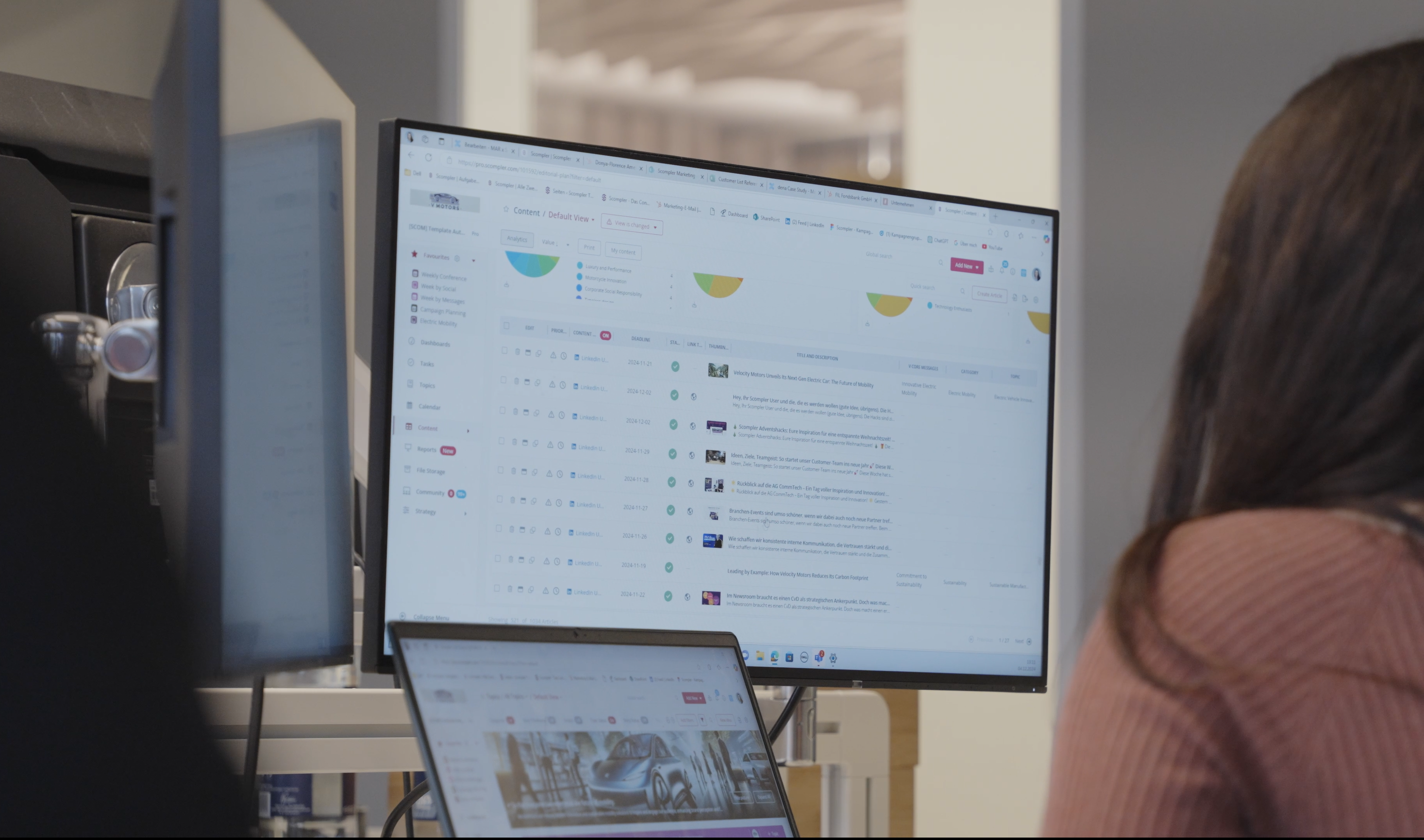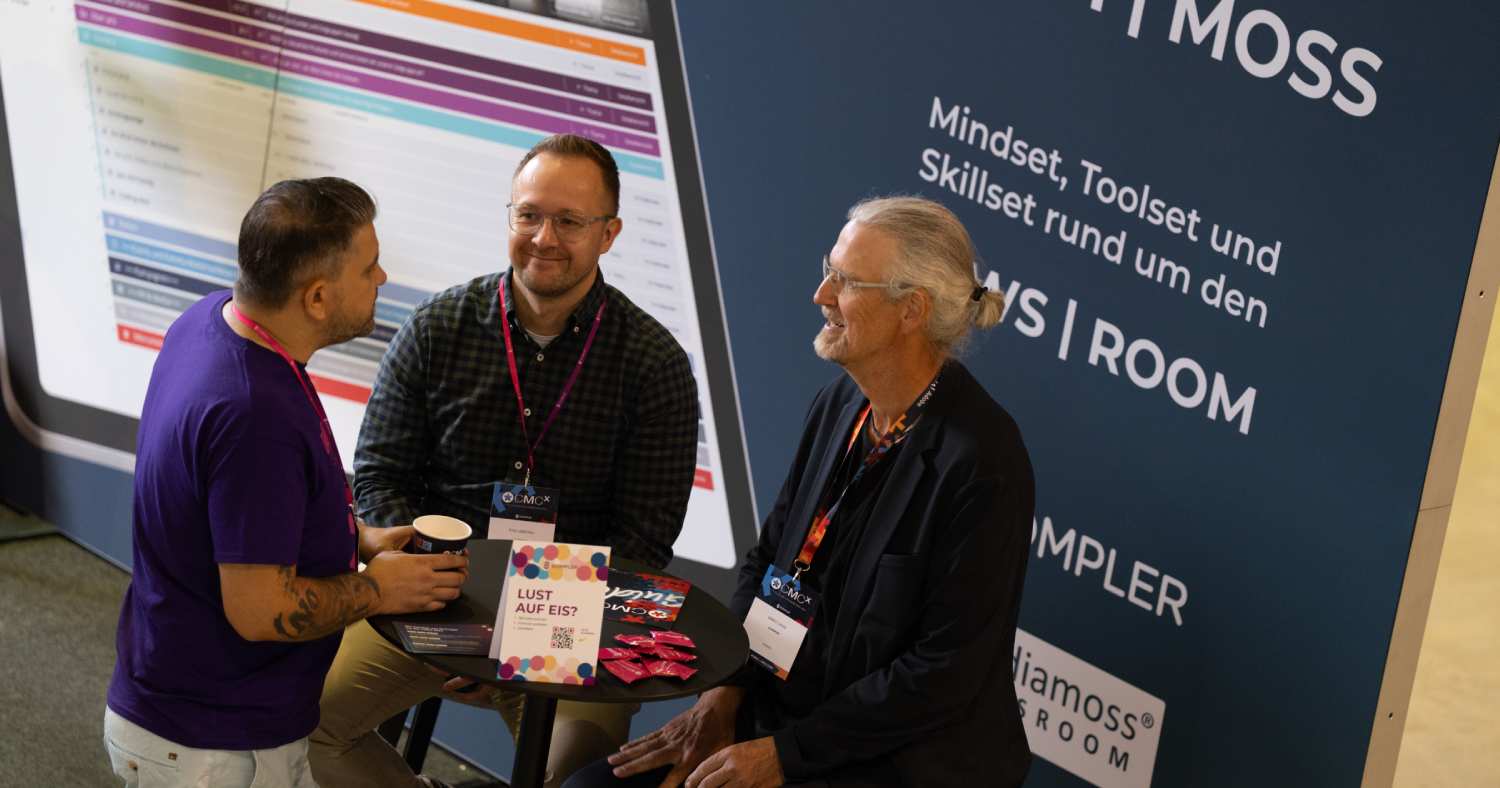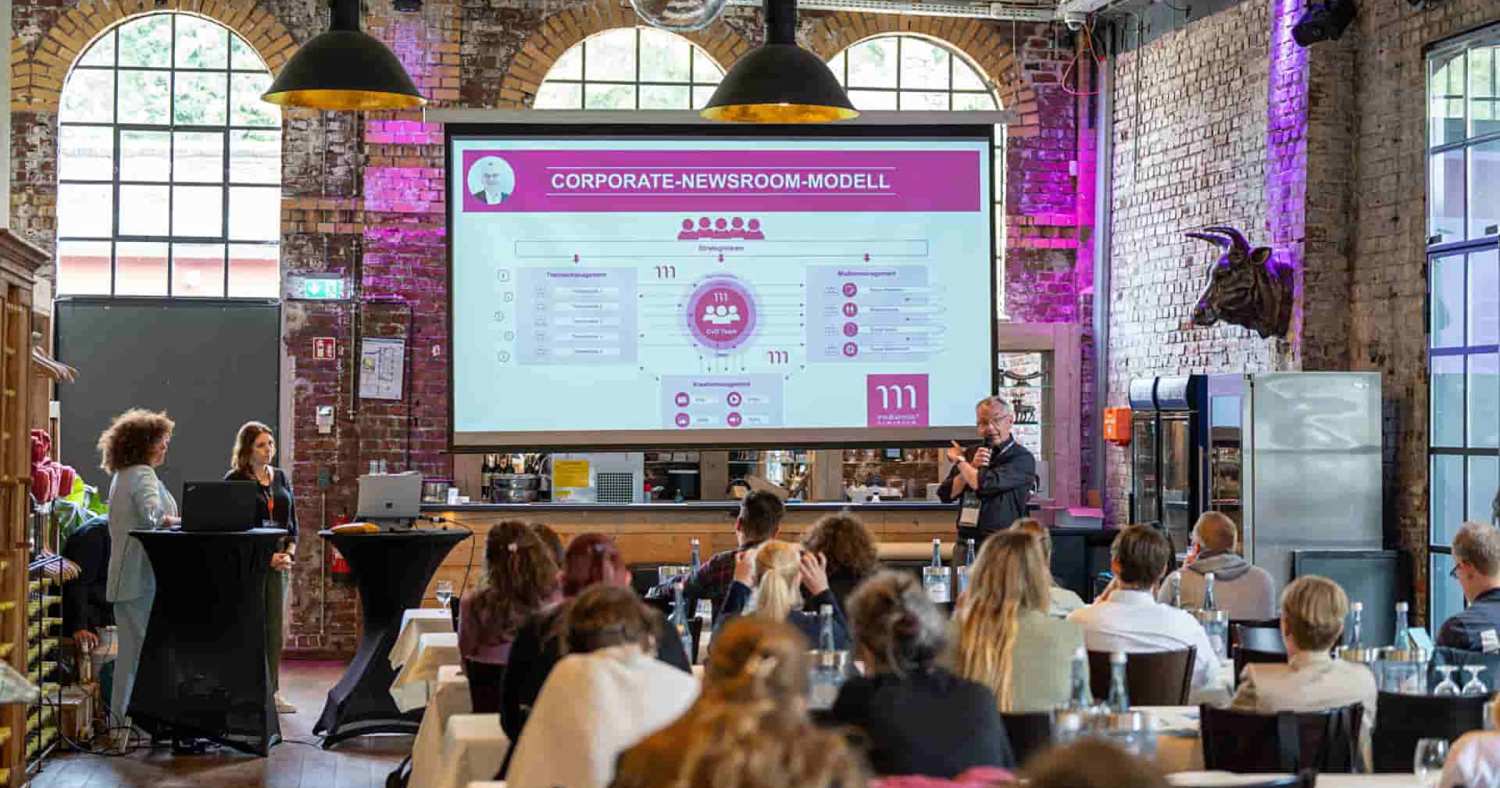
We read Harald Ille's article with great enthusiasm. We are delighted to be able to include his comments here as a guest article. Harald Ille describes how the Story Circle, the Content Radar and the FISH model are interlinked. We couldn't have described it better. Chapeau and many thanks!
"Why don't you put this on Facebook quickly?" Every social media manager has heard this sentence more often than Last Christmas last Christmas. "Why don't you post this?" We're happy to post without hesitation and dutifully put all sorts of things on Facebook - but first we should ask a few important systematic questions:
- How do our users benefit from this great post?
- What goals do we want to achieve?
- Which dialog groups do we reach with this - and do we even want to?
- What story do we want to tell? In which format?
- And is Facebook even the right medium, the right platform for our story?
We need to find these - and a few more - answers before we unleash our messages on the very critical world out there. Munich-based communications consultant Mirko Lange has been working intensively on the impact of content for over a decade. He has developed several methods that are very useful for tailoring content. Because only content that is perceived by users and generates a response from them is useful - all other content is a waste of time and money.
So how do we manage to produce targeted content that generates resonance? Mirko Lange proposes four systems that answer this question very well. I would like to present these four systems here. The first is the wonderful Story Circle.
The Story Circle
First of all, let's turn our thinking 180 degrees: it's not the platform or the channel that matters, but the message. So we don't think about Facebook first, but rather illuminate the idea that we want to communicate. We dress this idea in a story that we have protagonists tell. These heroes tell the story in different ways: As an adventure report or as a comic, as a thought-provoking interview or as a series of pictures, as an action video or - why not? - as a video game.

Only once the story circle has been spun and the story is hopefully complete does the question of the platform arise. Only when it is clear which hero will deliver which message to which audience: only then do we think about the platform. The nice thing about the Story Circle is that it becomes more comprehensive with every slice, which means that the journalistic forms of presentation become more diverse. The Story Circle nudges us towards more varied communication, more varied formats and a more varied approach. In short: the Story Circle prevents boredom and unimaginativeness.
The first system therefore looks at the narrative of our content: from the idea to the story to the platform.
A FISH sorts the content
Second classification: The function of the content. A fish, or rather the FISH model, helps with sorting.
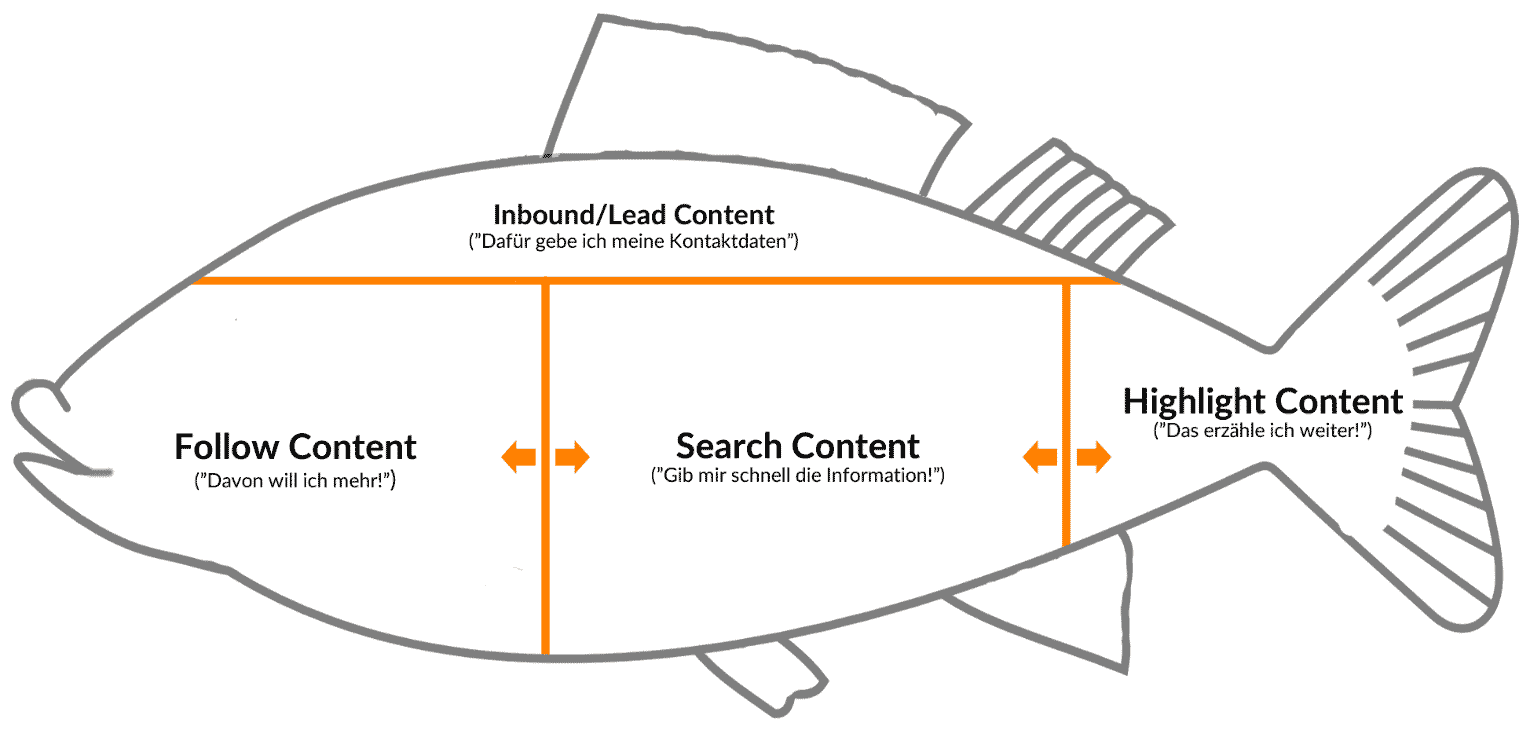
The FISH model
It helps to further categorize content and is very similar to the Google model, which divides content into the three categories Hygiene, Hub and Hero. However, the FISH extends the 3H model - strange that Google omits this aspect of all things - to include content that is prepared and provided for search results. But first things first.
Follow Content
Similar to the Google model, the FISH model divides content into the function it has. There is content that is so promising that I would like to see/read/experience more of it. So I follow the channel that offers it. Mirko Lange calls this type of good content worth following follow content - it can be nice stories, great videos, memes, pictures... The function of this content is simple: above all, it should generate reach. The effort required to produce it varies, but is generally only average. Exclusivity would be out of place here anyway: everyone should like the content and be able to follow it easily.
Inbound content
There is also a much more exclusive type of content, which is also much more expensive to produce. We don't want to simply give this content away: we want to get something for it. For example, we have produced a large study at great expense. However, we don't want to see money for it, but something far more valuable: the e-mail addresses of those who are interested in the content of the study. Why? So that we can contact them again later: classic inbound marketing, which is why Mirko Lange also calls the content inbound content. The function that the content fulfills: We want potential customers to voluntarily leave us their contact details as a "prize" for the wonderful insights and content that we provide them with free of charge. We don't impose the content on anyone (push), but rather: the interested parties ask if they can have it (pull).
Highlight Content
Highlight content, the driving force behind all our content efforts in the tail fin, so to speak, is what YouTube and Google call hero content: The one sensational video, the one insane picture series, the one unheard-of interview that causes a sensation and, exceptionally, achieves an extraordinary reach. The function of these - rarely used - gems of content production is clear: sharing. People should not only like or fan this content, they should pass it on, share it and personally recommend it. This content is (usually) very time-consuming to produce, makes the audience's eyes widen and mouths open, for "Wow!" and "I wouldn't have thought that", for "You all need to know that!" and "Made my day"...
The basic idea behind the FISH model is that content must fulfill certain tasks: both for the company (which has to finance it) and for the consumer (who would otherwise not read it). However, mixing tasks can interfere with each other, e.g. "generating leads" and "building trust". The more clearly content pursues each individual task, the better it will perform that task.
Mirko Lange
Search Content
Follow, inbound and highlight content are three content formats that are very suitable for longer stories and storytelling. Search content, on the other hand, is a content format that works in exactly the opposite way. If I want to know when the outdoor pool is open, I want the information immediately, I want a time or a period. Storytelling à la "The outdoor pool culture. How much has it shaped our everyday history over the last 200 years... blah blah blah" would not be immediately user-friendly or would be a frill. Search content must be concise, fast, precise and extremely well SEO-optimized, and of course not just for Google, but for all search platforms: YouTube, Amazon, eBay, Uber, Tinder... Its function is to provide information immediately.
Four different functions
We can therefore divide our content into these four functions
- Iwant the study!
- Inform immediately
- And haveyou seen this yet?"
- follow,
divide.
Or, more classically, in follow, inbound, search and highlight content, i.e. FISH. With the Story Circle and FISH model, we have come a long way on our content strategy journey, but - and this is the difference between tactics and strategy - we are not quite there yet. There are simply a few more methods, tools and systems that we need to use to answer the "Why do we post what we post?" question.
After the first step, the story itself, and the question of the function of the content as the second step, we now take a third step towards something that looks like a target.
The Content Radar
Mirko Lange has named the target Content Radar. This third of the four systems structures the content again, and once again there are four categories or quadrants to which we can assign our content.
Unlike the FISH, however, the Content Radar asks about the relationships that the content generates.

Let's take an example that everyone knows: #heimkommen, the Edeka commercial from last Christmas. A commercial that conveys an incredible amount of emotion, but not only that: it also asks us some moral questions that should move us deeply:
- How do we treat our parents, friends and relationships, how much value do we attach to them?
- Do we have the time and do we give them the time they deserve? What if there is a "too late"?
- What if we could turn the clock back again?
The commercial is undoubtedly profound. It indirectly questions the meaning of life and the depth of our relationships. And that makes this type of content completely different from this one.
Emotions in particular belong in the content strategy
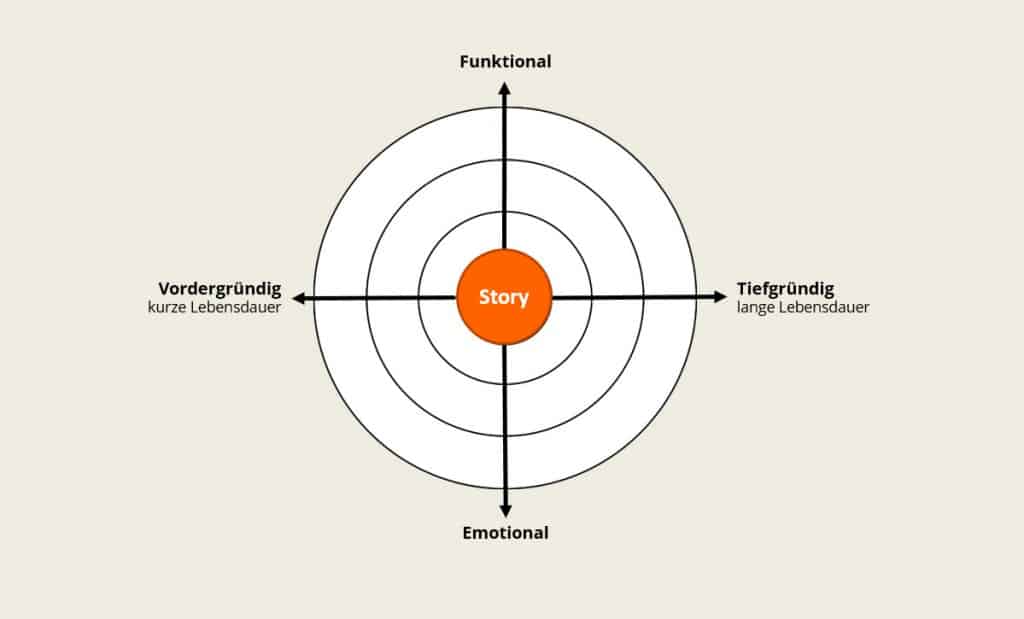
Mirko Lange's content radar
The Content Radar now classifies content according to how emotional it is and how profound this emotionality is. #homecoming marks something like the gold standard of this classification: very emotional, very substantial - and therefore also long-lasting. We will still be talking about this content in a few years' time, and we will definitely remember it with a lump in our throats. The cat meme, on the other hand, really stinks: one quick laugh and it's forgotten again. Depth? Rather not. A lump in the throat? Hardly.
The two pieces of content have different places in the content radar: the cat meme is just below the middle on the left: a little emotional, hardly factual, not very meaningful, therefore only briefly relevant. In contrast, #homecoming will be very far down on the right: lots of emotion, lots of meaning, lots of relevance.
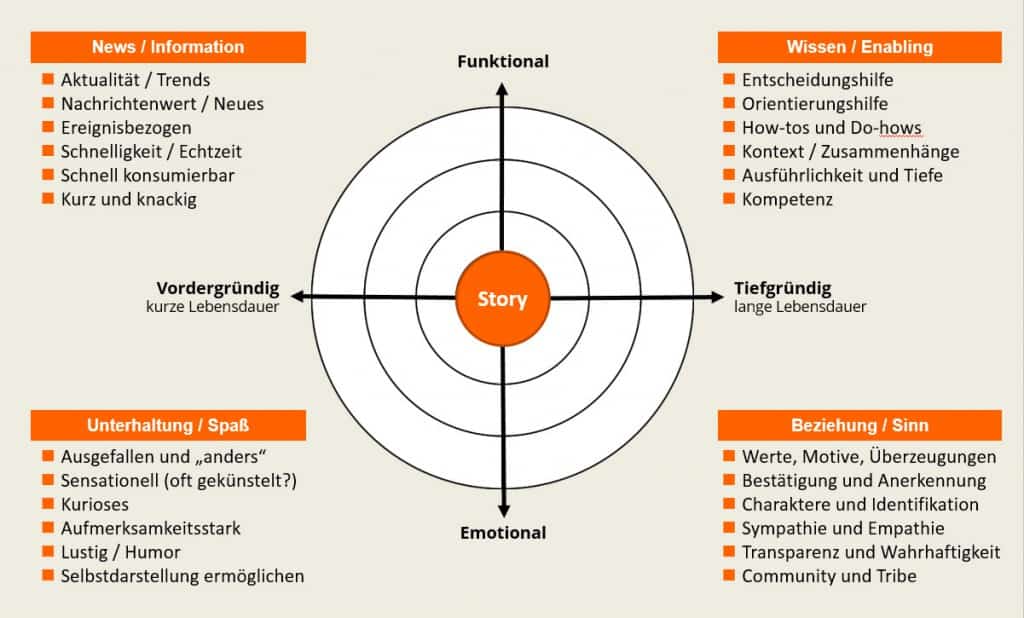
Mirko Lange's Content Radar - Content types
The counterpart to emotion, without which it would only be worth half as much, is rationality - in other words, objectivity. Factual content can be consumed quickly and forgotten just as quickly - short-lived news is such a case. This type of content is entered at the top left of the Content Radar. However, factual content can also have a profound effect on behavior and knowledge - in this case we place it at the top right.
The Content Radar therefore looks at the meaningful quality of content: Does it change us and our thinking, does it reach our hearts and brains - or does it bounce off us without leaving a significant impression? All four quadrants have their justification: There is quickly consumable factual content and funny, superficial jokes - without them, life would be poor in information and laughter. And there is content that gets under our skin because it stirs us up or because it changes us. Not all content is the same - a truism that FISH and Content Radar systematize...
FISH and Content Radar are ideally linked. While the first method groups our content into its function - there are four of them - the Content Radar locates it in terms of the relationship it builds and the benefit it has. Mirko Lange advises first breaking down the content according to the FISH model and then beaming the pieces onto the "radar screen".
The combination of the two methods structures the content down to the smallest detail and shows which formats and platforms are suitable in each case.
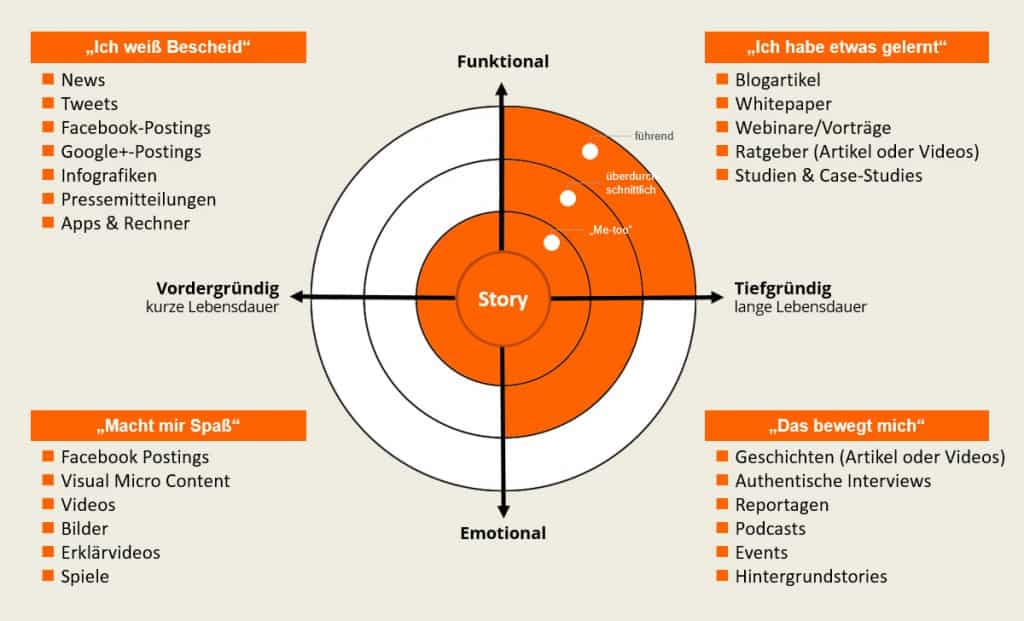
Mirko Lange's Content Radar - Exceptionality of content
Let's assume we have follow content. This is rather superficial, fun and informative. This type of content is very suitable for tweets and news, for short videos and infographics. It mainly colors the left half of the radar orange.
Inbound content is usually factual, functional and long-lasting. It manifests itself in studies, white papers and presentations - and colors the upper right quarter of the radar orange.
The vast majority of things you search for all day long are concrete things like keys, wallets or that tax form you wanted to have filled out the day before yesterday, had it not been for that Netflix episode... Seriously: Most search queries, especially on Amazon, eBay and other platforms, have functional content on them: times, contact persons and addresses, how-tos, study results, news... Search content therefore colors the upper half of the radar.
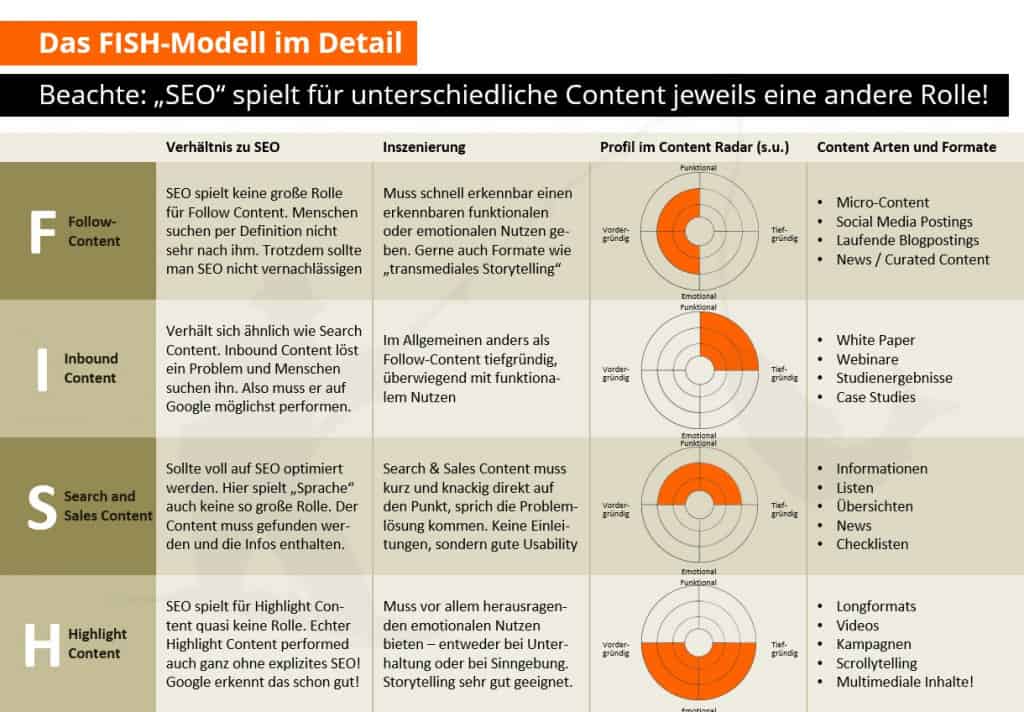
Mirko Lange's FISH model and content radar, SEO
That leaves the bottom half. Clearly, anything that conveys emotions has highlight potential. Highlight content therefore colors the southern hemisphere.
Each type of content therefore "colors" its intended dialog and target group differently, requires other typical formats and platforms - and has a different typical effect. This can be clearly seen in the KPI measurement: each of the four content types in the FISH model generates a different intensity curve. While follow content provides the background noise, which moves forward more or less evenly on a daily basis in a predictable corridor and hardly generates any major upward or downward spikes, inbound and, above all, highlight content do indeed cause major spikes! Because that is precisely part of their job description: to attract extraordinary attention.
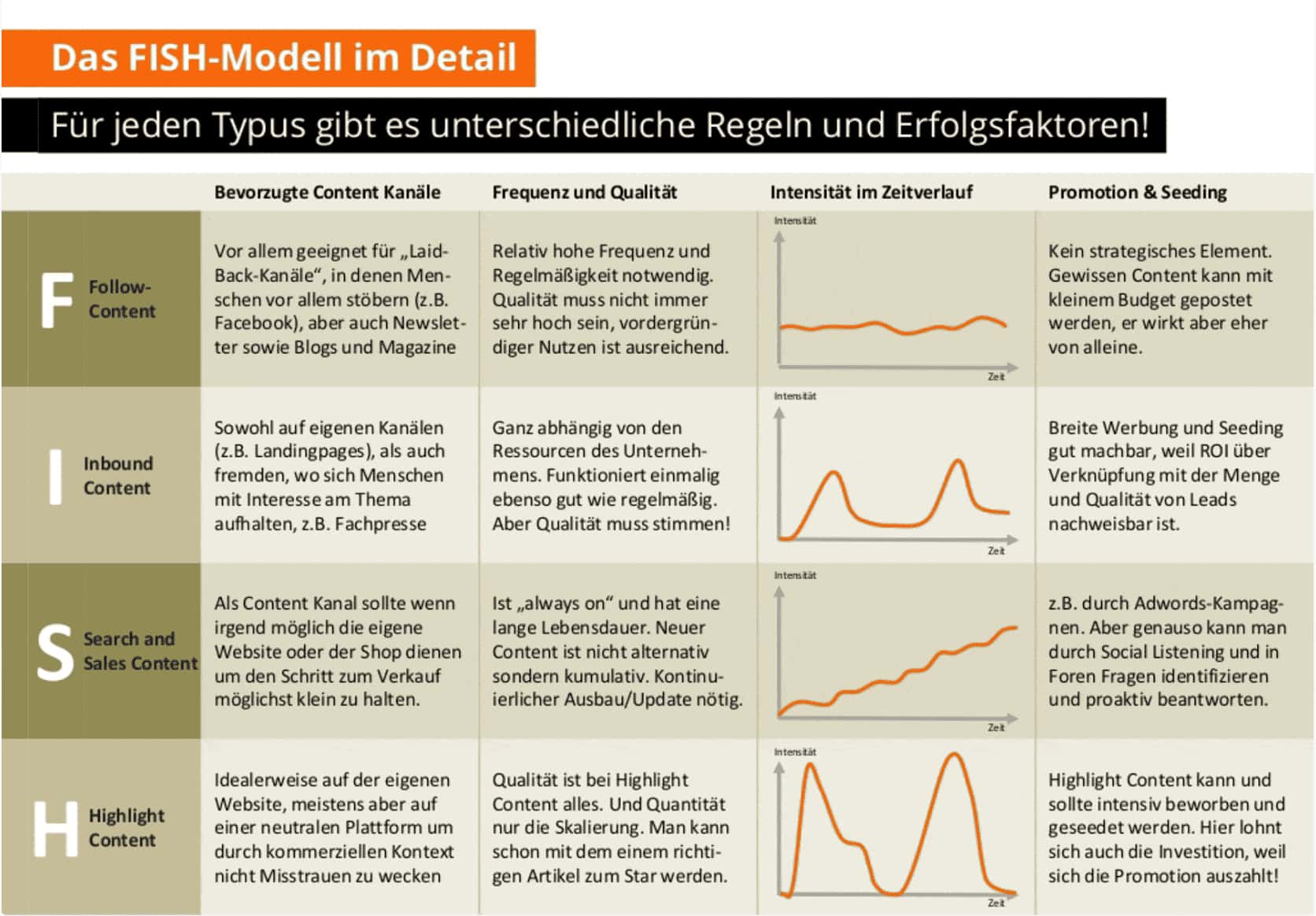
Mirko Lange's FISH model: Intensity over time
Once again, search content takes a special KPI path. It is always and constantly searched for; but instead of a consistently broad corridor as with follow content, the search intensity increases steadily over time (with well-maintained websites!). Simply because new content is constantly being added and can be found in addition to existing content. "New content is not alternative, but cumulative," says Mirko Lange. You need to know this when planning your KPIs...
If you have now tasted strategic "blood" and would like to delve even deeper into the subject: Mirko Lange offers an introduction to his models here.

